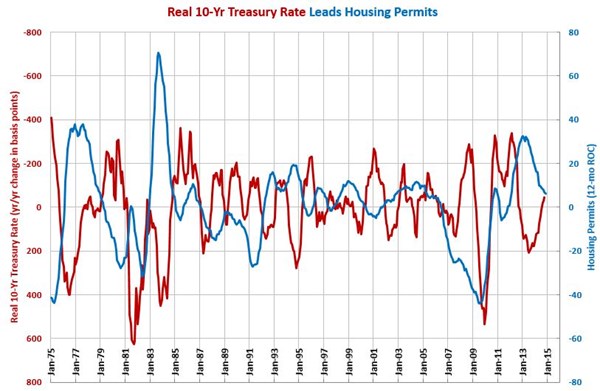Housing Permits Contract for Second Time since July 2011
In November, the month-over-month rate of change contracted 2.6%, which is just the second time that it has contracted since July 2011.
According to the Census Bureau, there were 69,800 housing permits filed in November 2014. This was a decrease of 2.6% compared to one year ago. November was just the second time since July 2011 that the month-over-month rate of change contracted. Both of those instances occurred in the last seven months. As a result, the annual rate of growth continued to decelerate, as it has done since April 2013. Housing permits are growing at their slowest annual rate since January 2012. Unlike in previous months when the annual rate of growth looked like it was ready to bottom out and begin accelerating, it now appears that the annual rate of growth will continue to decelerate for at least the next few months.
The real 10-year treasury rate is a good leading indicator of housing permits. The year-over-year change in the real 10-year treasury rate has been trending down since July 2013. In fact, the change in the real rate has been negative for three months. Since changes in the interest rate lead changes in housing permits and construction spending by about 12 months on average, we should expect to see the rate of growth in housing permits to bottom our soon (everything else being equal of course).
We use housing permits as an early leading indicator for the following industries: appliances; custom processors; furniture; hardware; HVAC; off-road/construction machinery; petrochemical processors; plastics; plastic/rubber products; pumps/valves/plumbing products; textiles/clothing/leather goods; and wood/paper products.



.JPG;width=70;height=70;mode=crop)